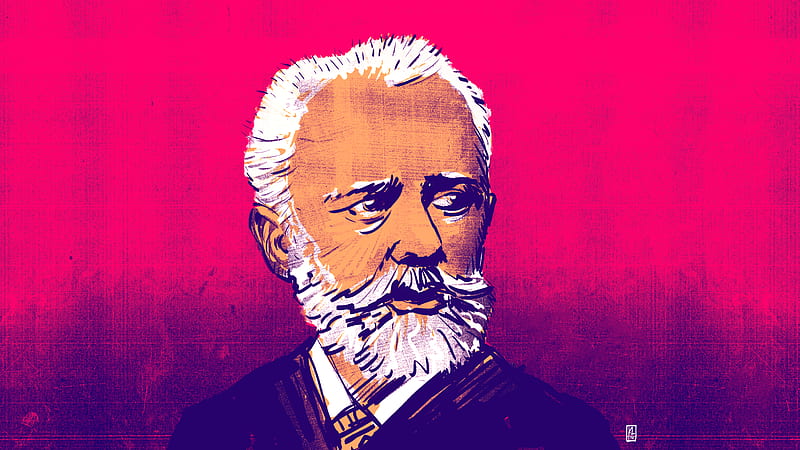Introduction: The Nutcracker is one of the most beloved ballets in the world, enchanting audiences of all ages with its magical story and beautiful music. Composed by the legendary Russian composer Piotr Ilyich Tchaikovsky, The Nutcracker has become a holiday tradition worldwide, synonymous with the spirit of Christmas and festive celebrations. This page explores the fascinating history and background of Tchaikovsky’s The Nutcracker and its journey to becoming a cultural icon.
The Origins of The Nutcracker
The story of The Nutcracker began long before Tchaikovsky’s music brought it to life on stage. The ballet’s narrative is based on a story by German author E.T.A. Hoffmann titled The Nutcracker and the Mouse King, published in 1816. Hoffmann’s tale was dark, filled with fantastical elements and a hint of Gothic horror.
In 1844, French writer Alexandre Dumas adapted Hoffmann’s story into a more family-friendly version. Dumas’s version softened the darker elements of the tale, focusing instead on the magical adventure of a young girl named Clara and her nutcracker doll. This adaptation became the basis for the ballet.
In the early 1890s, Ivan Vsevolozhsky, the director of the Imperial Theatres in Russia, approached Tchaikovsky and proposed that he compose a ballet based on the Dumas adaptation. Tchaikovsky had already achieved great success with his ballet Swan Lake and was the ideal candidate for bringing The Nutcracker to life on stage.
Tchaikovsky’s Journey with The Nutcracker
Tchaikovsky began composing the music for The Nutcracker in 1891, although he initially felt unenthusiastic about the project. He was still grieving the recent death of his sister and was unsure that the story of The Nutcracker could be transformed into an exciting ballet. However, his approach changed when he began to experiment with unique and new sounds, notably with the celesta, a keyboard instrument with a bell-like tone, which he used to great effect in the iconic “Dance of the Sugar Plum Fairy.”
In addition to the celesta, Tchaikovsky used a range of musical elements to bring the story to life, from delicate woodwinds to triumphant brass. The result was a score filled with contrasts that perfectly reflected the fantasy and wonder of the tale, including unforgettable pieces like the “Waltz of the Flowers” and “The Russian Dance (Trepak).”
The Premiere of The Nutcracker Ballet
The Nutcracker premiered on December 18, 1892, at the Mariinsky Theatre in St. Petersburg, Russia. Tchaikovsky’s score was presented alongside his opera Iolanta, making it a unique double-bill performance. Initially, the reception was mixed. Critics appreciated the music but found the ballet’s choreography and story lacking in depth and cohesion. The Nutcracker was not an immediate success, and Tchaikovsky did not live to see it become the holiday classic it is today.
Despite the lukewarm reception, Tchaikovsky’s music stood out. The Nutcracker Suite, a concert arrangement of selected pieces from the ballet, quickly became popular and helped cement the music’s reputation.
The Nutcracker’s Journey to Global Fame
It wasn’t until the mid-20th century that The Nutcracker truly captured the public’s imagination and became a beloved holiday tradition. In 1944, the San Francisco Ballet became the first American company to perform a full production of The Nutcracker, directed by Willam Christensen.
However, it was George Balanchine’s 1954 production for the New York City Ballet that popularized The Nutcracker as a holiday staple in the United States. Balanchine’s choreography and the enchanting sets and costumes appealed to families and theater-goers alike. Soon after, The Nutcracker was embraced by ballet companies across the U.S. and Europe, becoming a fixture of the Christmas season.
The Legacy of Tchaikovsky’s The Nutcracker
Today, The Nutcracker is performed by ballet companies around the world, drawing millions of viewers each year. Its scenes and melodies are instantly recognizable, even to those unfamiliar with ballet, and its story of holiday magic and childhood wonder resonates with audiences of all ages.
Tchaikovsky’s The Nutcracker is much more than a ballet; it’s a cultural phenomenon. Each year, productions continue to inspire new interpretations and innovative choreography, breathing fresh life into this classic story. Whether experienced live on stage, on film, or through Tchaikovsky’s beautiful score, The Nutcracker remains a testament to the enduring magic of music and dance.
Conclusion: From its origins in Hoffmann’s story to its transformation into a beloved ballet, The Nutcracker has traveled a remarkable journey. Tchaikovsky’s beautiful music has brought the characters of Clara, the Nutcracker Prince, and the Sugar Plum Fairy to life, capturing the hearts of generations. As the curtain rises each holiday season, The Nutcracker continues to remind us of the magic, wonder, and joy of this timeless art form.


Comments are closed